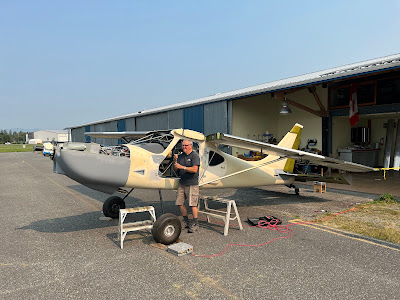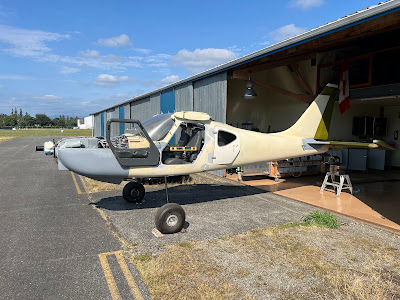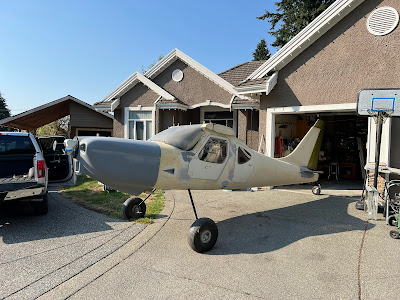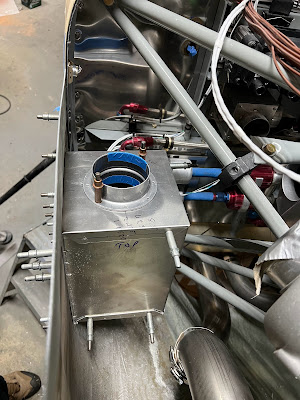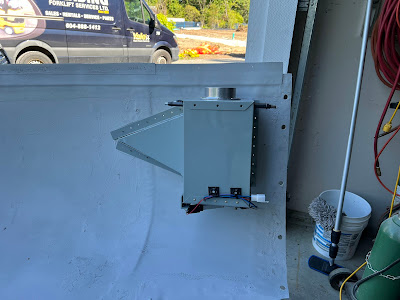From where I sit today, I HATE Skybolt fasteners. Why you may ask?
- Their part numbers are cryptic
- Their website sucks
- Their installation instructions are poor (and I am being kind)
- Tech support emails go unanswered
- Tools that will make you scratch your head....
However, there are some reasons to really like them (which is mostly why I ordered them).
- Their product are awesome (once you get through the part number soup, shitty website, crappy installation instructions, etc)
- They will readily swap parts (that you ordered incorrectly because of their shitty website, part number soup, etc)
- Shipping is fast and inexpensive (USPS)
- Infinite possibilities (lengths, fastener styles, adjustments, etc)
- Tools that work really well once you understand their function
So that is an even 5 for 5.
How I got to this point: I have had the fasteners for months. I played around with them, played with the tools, read the (shitty) instructions, and kept scratching my head.
And THEN I installed one in some scrap material. NOW it all starts to make sense.
Drilling the holes for the fastener is easy. Countersinking and riveting is easy.
- Drill your initial pilot for the fastener with a 3/32 / #40 bit
- On the inside panel, drill up to 1/8 / #30. Use the Skybolt template - cleco in the center hole.
- Drill for the fastener mounts
- Countersink for 1/8" rivet
- There is an option to drill an offset hole for the locking pin. If you read the instructions here, you dont need it unless you do not have rear access.
- Drill the fastener hole to 1/2"
- Rivet the fastener
- Drill the panel to be fastened hole to 1/2"
- Insert the grommet in the outer hole.
- Install the fastener using the SK-T26 tool. Using the U shape slot to grab just below the spring, and the other side on the phillips head. Compress the fastener, and angle it into the grommet. It is now captive in the grommet.
- These are adjustable receptacles, so obviously you have to adjust them. The instructions in step 4 show you how
- With the barrel unlocked and both panels lined up, push the fastener in and lock it with a quick clockwise motion. Wind it in to your preferred depth. Unlock it with a quick counter clock wise motion.
- Remove the panel. Pull the locking pin. Using a flat blade screwdriver, wind the fastener barrel in or out so the lock engages
- Put the retaining ring on the grommet (I am not doing this until after paint)
The benefit to this system is if you have variable depths, you can get away with one fastener length - at least that is my theory.
You can adjust the depth down the road with a pick set. Pull the locking tab up with a curved pick, and wind the barrel in or out to get the right depth, and relock by removing the pick.
Got the aft edge of the upper cowl done in an evening.
- On the Sportsman when drilling the firewall joggle, you are drilling both fiberglass and stainless. Bits wear fast. I am going to go buy a 1/2" Milwaukee step drill - I have a 1" version and it is awesome. They are not cheap, but they last.
- Need to remember to position the pin in the right spot.
- I clamped a backing board to the inside of the joggle when drilling.
I have not pulled the pins yet to set the depth. Will do that once she is all painted...
Moving onto the lower cowl / fuselage intersection next.
After many months of doing other things, finally came back to this.
So I am half done now. 32 fasteners total, and 18 are done.
I need to extend the flange on the right side of the cowl slightly. I cut it too short. But after that, clear path ahead to get these done.
I buggered up one fastener, and had one that would not rotated. Other than that they have been fine and great to work with.
Both sides are done... not thrilled with the fit (not an issue with the fasteners). It's a function of how the cowl was extended unfortunately.
All are done now... still not thrilled with the fit, but I think I can shim it where required. I have not locked the fasters in yet (by pulling the pin), and the fasteners themself do not have the retaining snap ring installed... these will both be done after paint is complete.
